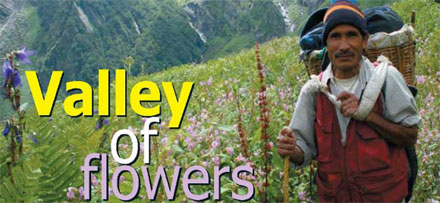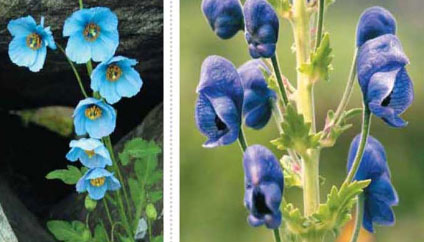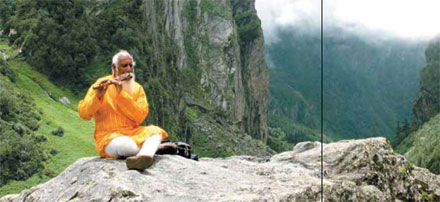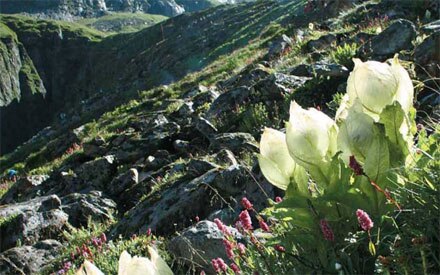Welcome to valley of flowers

In the Himalayas, an unblemished valley runs riot in an explosion of pinks, reds and purples
'In my mountaineering wandering I have not seen a more beautiful valley than this ... this valley of peace and perfect beauty where the human spirit may find repose.' These were the words quoted by Frank Smythe, noted British mountaineer, botanist and explorer after discovering the valley of flowers in 1931.
In 1931, Frank S. Smythe, who was part of a team of six British mountaineers that climbed Kamet, came across the valley beyond Bhyundar Pass that had 'lush meadows… embowered amidst flowers. They were so many that 'it was impossible to take a step without crushing a flower'.
A World Heritage Site since the year 1988, and a national park since 1982 , the Valley of Flowers has enraptured mountaineers and botanists alike much longer.

The enchanting Valley of Flowers National Park is nestled at the altitude of 3,858 feet above the sea level in Chamoli district of Garhwal hills of Uttaranchal. Joshimath which is the base camp of Valley of flowers is situated in Chamoli district. Then a 20 km drive from Joshimath would reach Govindghat. From here the trek starts as the vehicles plying to the valley of flowers and to the Sikh Shrine at Hemkund, are allowed only till here. The Hemkund lake is 4, 329 feet above sea level.
All visitors have to get an entry permit at a nominal fee available at the Forest Check post at the entrance to the park before crossing the bridge over Alaknanda river and they also have to remit the money for horse and coolies. The pass is valid for three days. The trek route is along the banks of Lakshmana Ganga. Crossing three more kms is Pulna, a village. Then comes Bhyundar Valley. From here the trail is a little wilder and more forested, with occasional glimpses of peaks. Then comes Ghangaria and from there reaches very active small township with full of travelers, ponies and coolies. In western side stood snow filled Nilgiri and Gowri mountains.
You can have a stay at Gangharia and there is no difficulty in getting rooms for accommodation. Ghanghria is the base camp for tourists who want to walk the trails to Valley of Flowers as only half an hour journey is needed from here to the entrance of valleys. Morning is the best time to start the trek to valley . A trail through the mountain path filled with snow, morning lights and beautiful flowers. The path extended to forest land filled with Fir and Yew trees of Himalayan ranges. In the lower part, Pushpavati River was meandering in peace.
When the walk way from the village ends, the path divides into two, one in left to the valley of flowers and next to the right is Hemkund lake which is 6 km away. Climbing up a rocky trail, with the forest behind us, hundreds of flowers begin to appear. Primulas, white anemones, golden, nomocharis, marigolds, globe flowers, delphiniums, violets, eritrichiums, blue corydalis, white roses and rhododendrons, saxifrage, yellow and red potentilla, geranium, asters and gentians, so many that it would be really impossible to take a step without crushing a flower. Valley of flower is splashed with color as it bloomed with hundreds different beautiful flowers, taking on various shades of colors as time progressed.

Himalayan Gigantic Balsam has bloomed and stretched along the valley like a carpet. Then came large Bell Flowers which blossoms from Kashmir to Nepal. Hogweed flowers were dancing in the wind. Next was Blue Himalayan Poppy (Meconopsis aculeate)` a flower with blue petals and yellow stamens make an enchanting view. Delicately graceful blue poppies had grown along the banks of Pushpavati River giving it a magical look. The visiting time to the valley is from Morning 6 to evening 3.
In the midst of valley stood the memorial of Margaret Legge, a botanist deputed by the botanical gardens of Edinburgh, who came here in 1939 and arrived at the valley for further studies. While she was traversing some rocky slopes to collect flowers, she slipped off and was lost forever. Her sister later visited the valley and erected a memorial on the spot where she was buried by the locals. The thoughtful memorial is still there.
The exquisite flower Brahmakamal (Saussurea obvallata) which had been mentioned in legends, is the sacred flower of Himalayas. The flower blooms only at an altitude of 3,000 meter above sea level. The only way to see Brahmakamal is trek to Hemkund lake where the flower blossoms in abundance.

A very popular trekking destination, Hemkund is a 6 km trek from the valley . The lake and its picturesque surroundings are an important pilgrim center for both Hindus and Sikhs. Close to the lake, the sacred Sikh Gurudwara and Lakshman temple are located . If one starts journey to Hemkund from Ghangharia early morning they would get enough time to spend there.
When one reaches Hemkund lake, Brahmakamal stood blossomed there. The flower is a cream color flower with brown and red stamens in the center. These flowers grow up to six to eight inches and have lotus-like petals. One has to be fortunate enough to see the flower. The lake and the Gurudrwara on its banks may be covered in the snow any time and usually the flowers are an unseen sight covered by the mist. But we were fortunate enough to get a view of Brahmakamal in a crystal clear atmosphere. Those sacred flowers standing along the banks of the lake under the blue sky…
Text an Photos: Suresh Elamon
Translation: Shamila KY
=============================================================

No comments:
Post a Comment